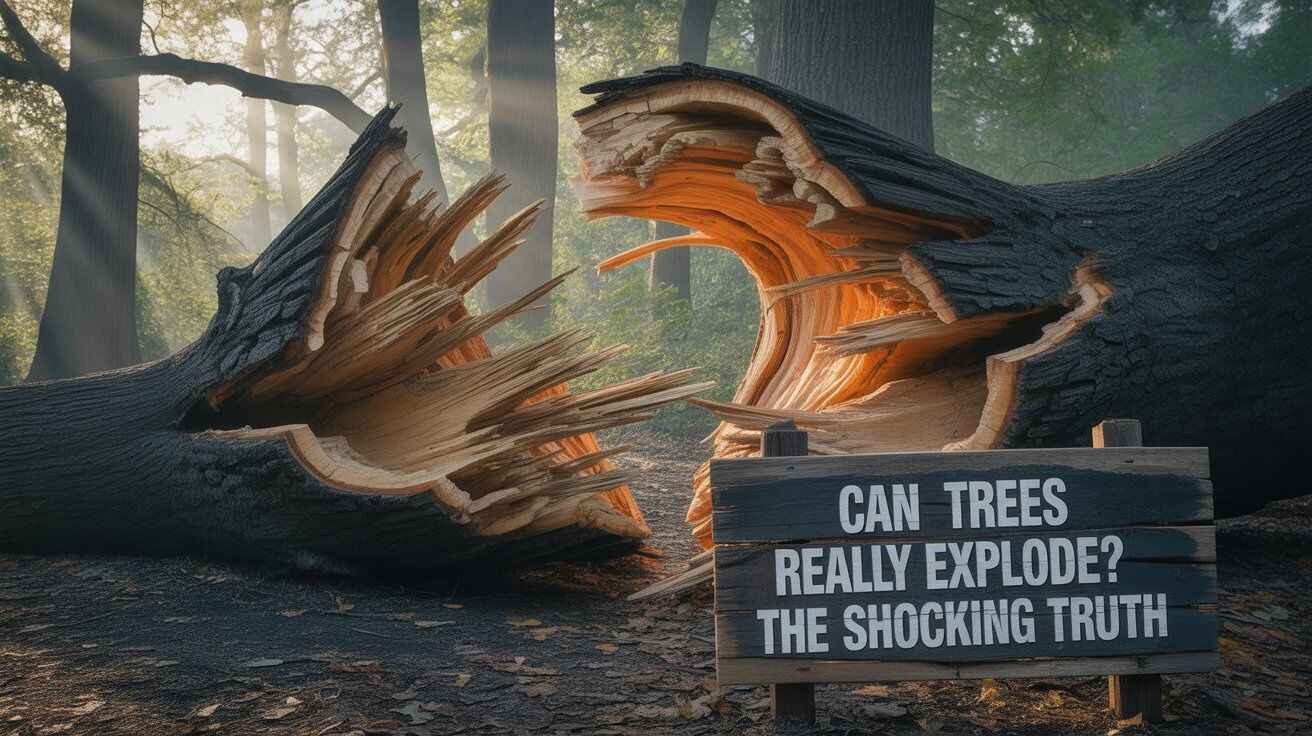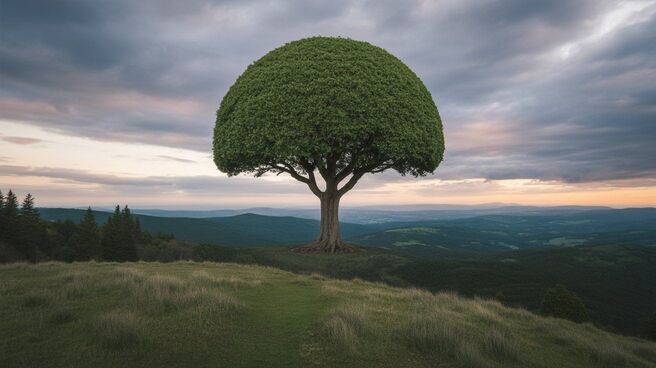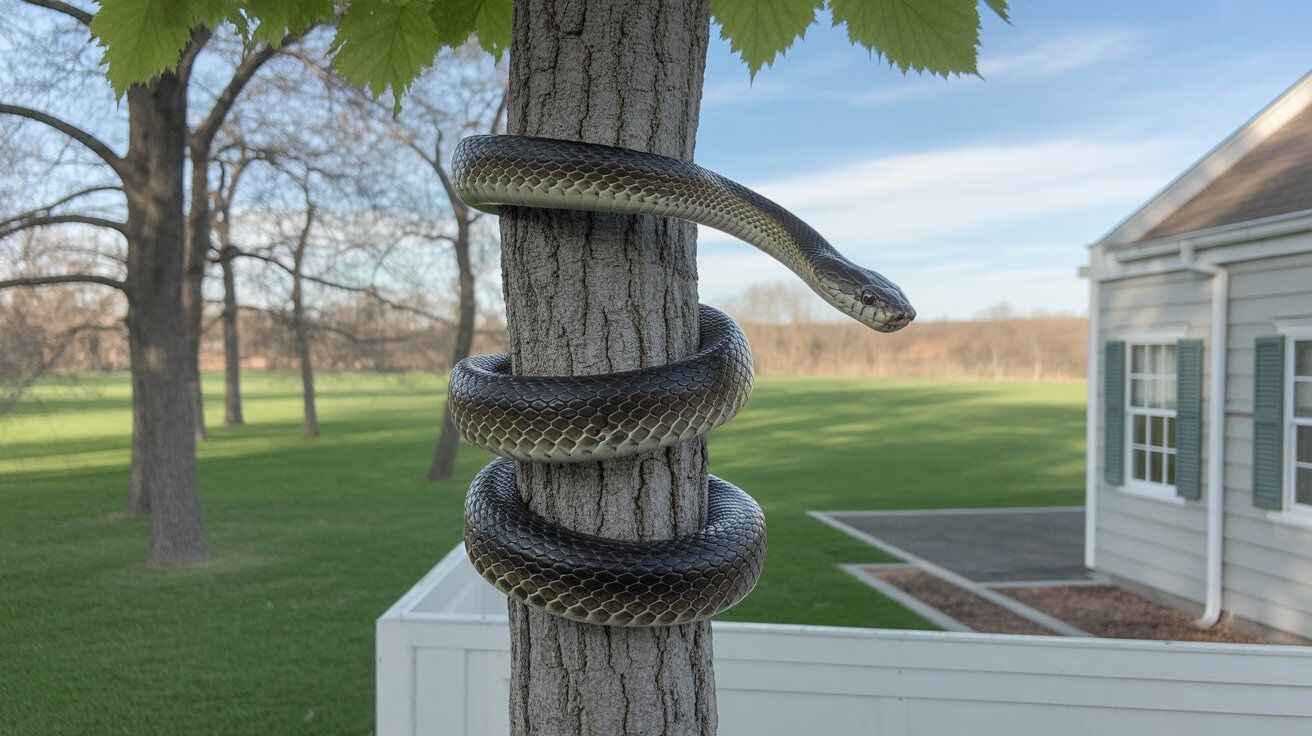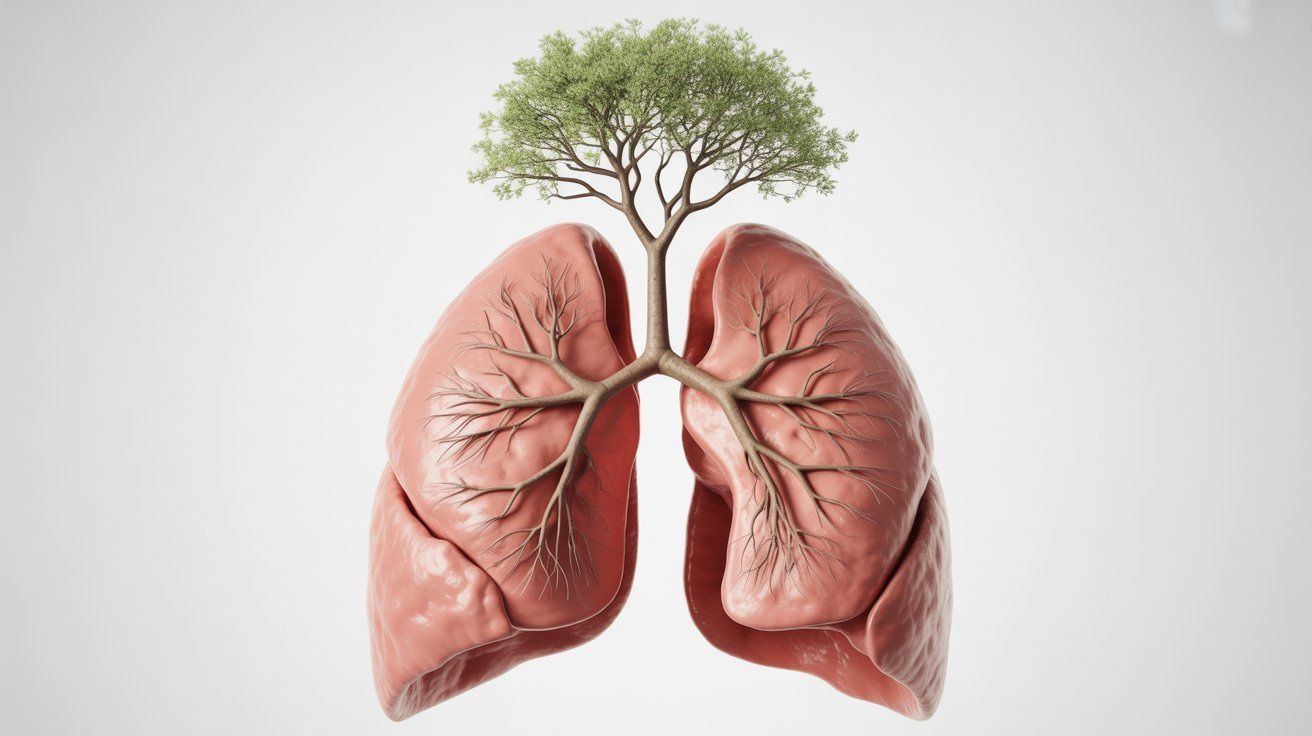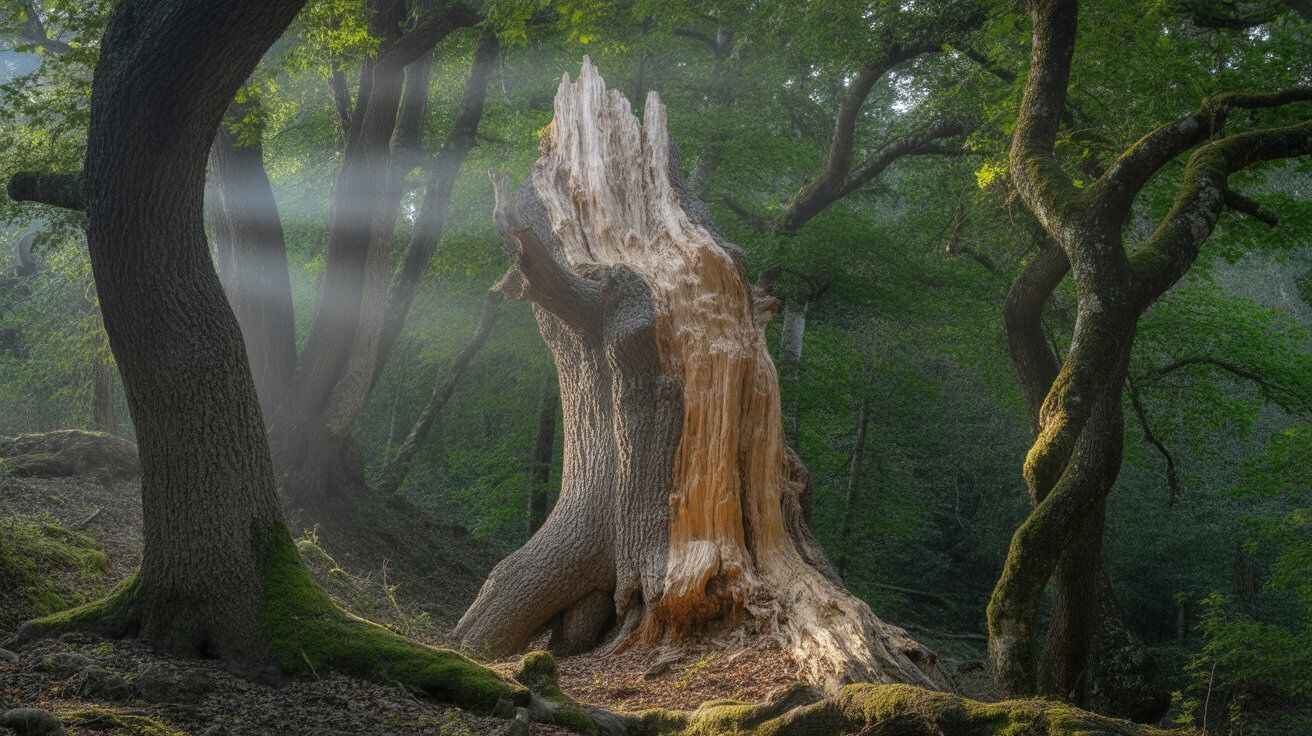Can trees explode? Learn how frost cracks, lightning, and explosive seed dispersal cause tree bursting and how to prevent damage safely.
Causes of Tree Explosions
Several factors can cause trees to explode, each linked to environmental stress or natural adaptations. Extreme cold can rapidly freeze sap, creating internal pressure that leads to frost cracks and sudden tree bursting. Lightning strikes heat sap in the trunk, producing steam that splits wood explosively. Some trees, like the sandbox tree, have evolved explosive seed dispersal mechanisms, where fruit capsules burst to scatter seeds over large areas. Understanding these causes highlights why tree explosions are rare but remarkable phenomena.
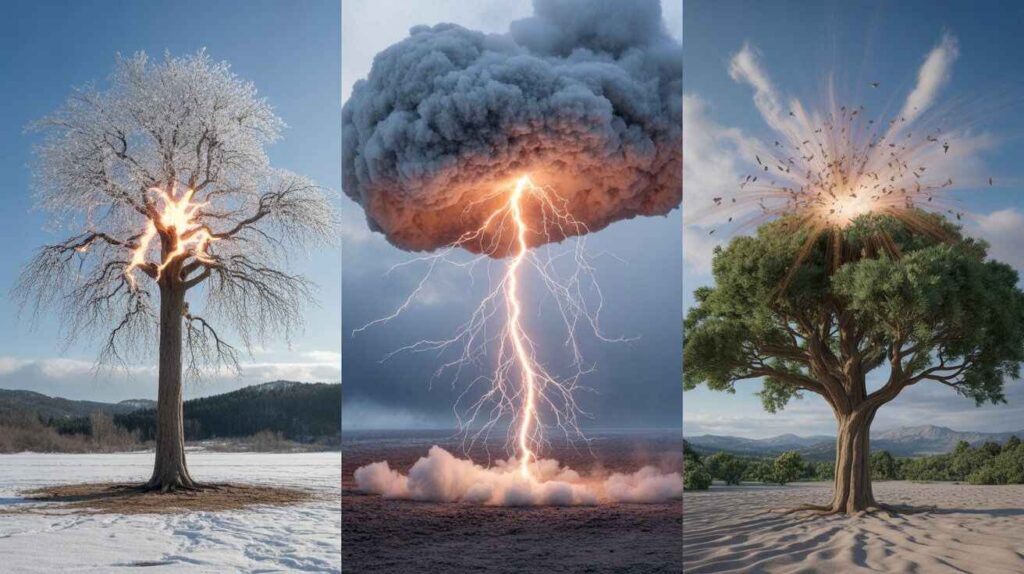
The Phenomenon of Frost Cracks
Frost cracks are a common cause of tree explosions in cold climates. When sap freezes rapidly, it expands, creating intense internal pressure that splits bark and wood. These splits often produce a loud cracking sound, startling anyone nearby. Certain species, especially thin-barked or fast-growing trees, are more prone to frost cracks in trees. While the damage may seem minor, repeated occurrences can weaken the tree, making it more susceptible to disease and tree bursting during extreme cold.
Lightning-Induced Tree Explosions
| Factor / Cause | What Happens | Impact on Tree | Safety / Notes |
|---|---|---|---|
| Lightning Strike | Intense heat hits tree | Instant vaporization of sapwood water | Can split trunk/branches explosively |
| Steam Pressure | Water inside tree turns to steam rapidly | Trunk or branches burst | Fragments can fly, dangerous to nearby people |
| Tree Size & Species | Small and large trees affected | Trees with higher water content more susceptible | Monitor trees during storms, avoid standing nearby |
| Branch / Trunk Damage | Splitting, cracking, bark peeling | Weakens structural integrity | May require removal of hazardous parts |
| Awareness & Safety | Understanding lightning risks | Helps prevent accidents | Stay clear of trees during thunderstorms |
Explosive Seed Dispersal in Trees
Some trees have evolved explosive seed dispersal as a natural reproductive strategy. The sandbox tree (Hura crepitans) is a well-known example: its mature fruit capsules explode, flinging seeds at high speeds to colonize surrounding areas. This mechanism relies on built-up internal pressure within the fruit, ensuring seeds travel far from the parent tree. While not a threat to humans, this natural tree bursting is a fascinating adaptation, highlighting the unique ways trees spread offspring in arboreal and forest habitats.
Preventing Tree Explosions
Preventing tree explosions involves careful selection and maintenance. Planting frost-resistant species can reduce the risk of frost cracks in trees, while proper watering and avoiding late-season fertilization helps maintain healthy sap flow. Protecting young or vulnerable trees during winter with wraps or barriers can prevent sudden tree bursting. Regular inspections for cracks, splits, or signs of stress allow early intervention. By understanding the causes of tree explosions, homeowners and arborists can take proactive steps to protect both trees and nearby structures.
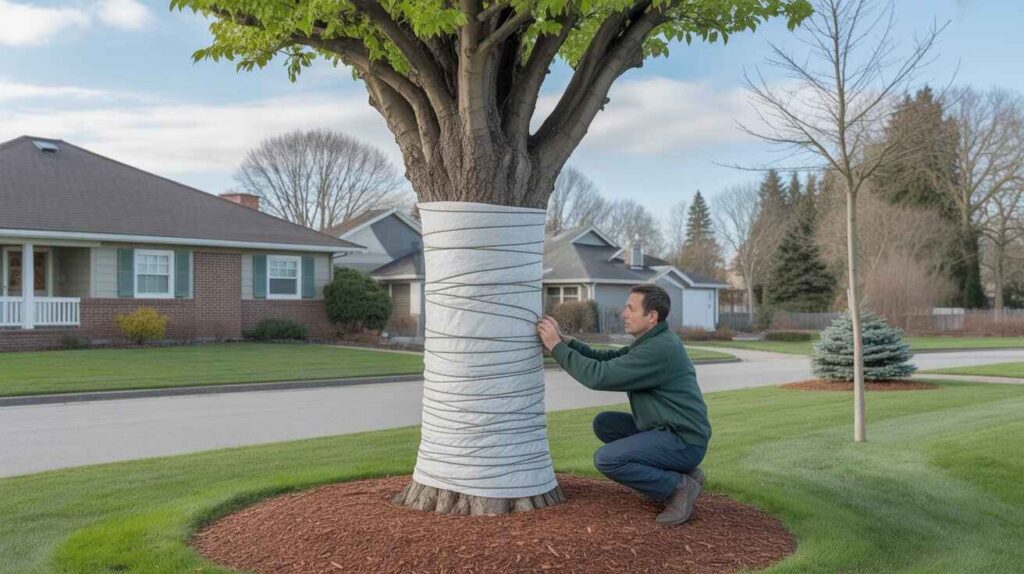
Conclusion
So, can trees explode? Yes, under certain conditions, trees can rupture or burst due to extreme cold, lightning strikes, or internal pressure. Frost cracks, lightning-induced splits, and explosive seed dispersal in species like the sandbox tree showcase the fascinating adaptability of trees. While tree explosions are rare, understanding their causes helps prevent damage and ensures safety. Proper tree care, winter protection, and awareness of environmental risks are essential for minimizing the chances of sudden tree bursting.
FAQ: Can Trees Explode?
Q1: Can trees really explode?
Yes, under extreme cold, lightning strikes, or internal pressure in certain species.
Q2: What causes frost cracks?
Rapid sap freezing creates internal pressure that splits bark and wood.
Q3: How does lightning make trees burst?
Lightning vaporizes sap, producing steam that splits trunks or branches explosively.
Q4: Do some trees naturally explode?
Yes, species like the sandbox tree use explosive seed dispersal to spread seeds.
Q5: How can explosions be prevented?
Use frost-resistant species, wrap vulnerable trees, maintain healthy sap flow, and inspect for cracks.

Jhanzaib Khan, with over 50 years of dedication to nature and tree conservation, is a leading authority in the world of trees and environmental care. From his early years exploring forests to guiding communities in sustainable tree planting, Jhanzaib has combined hands-on experience with a lifelong passion for the environment. He specializes in tree species identification, tree care, forest management, and environmental awareness. His insights have been featured in multiple nature blogs, workshops, and local conservation projects.

